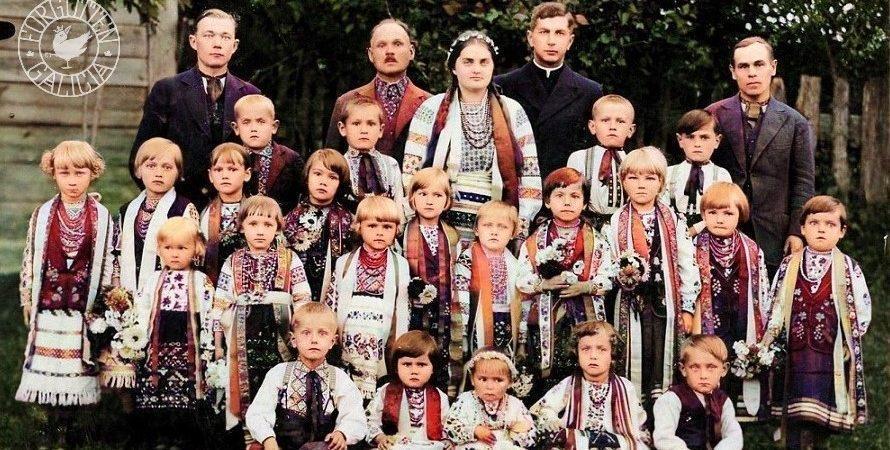Following the dissolution of the Austrian Empire at the end of World War I, Galicia became a part of Poland, which exerted pressure on Ukrainian cultural identity. In response, a wave of Ukrainian national consciousness emerged among the middle class and urban populations. While desiring to express their Ukrainian heritage, they were reluctant to adopt the peasant costume. As a result, they invented a distinctive alternative known as the Halychyna Town Costume (“Halychyna” means “Galicia” in Ukrainian).
Although not strictly a traditional Ukrainian folk costume, the Halychyna Town Costume drew inspiration from elements of peasant attire while evolving into a unique tradition in its own right. While the specific details of the costume could vary, there was a generally recognized standard.
Over the interwar period, this costume gained significant popularity. It could be found in various regions of eastern Galicia, except where strong local costume traditions persisted.
Primarily reserved for special occasions, the costume was donned for school photographs, theatrical performances, society gatherings, choir portraits, and other commemorative events in the lives of Ukrainians.
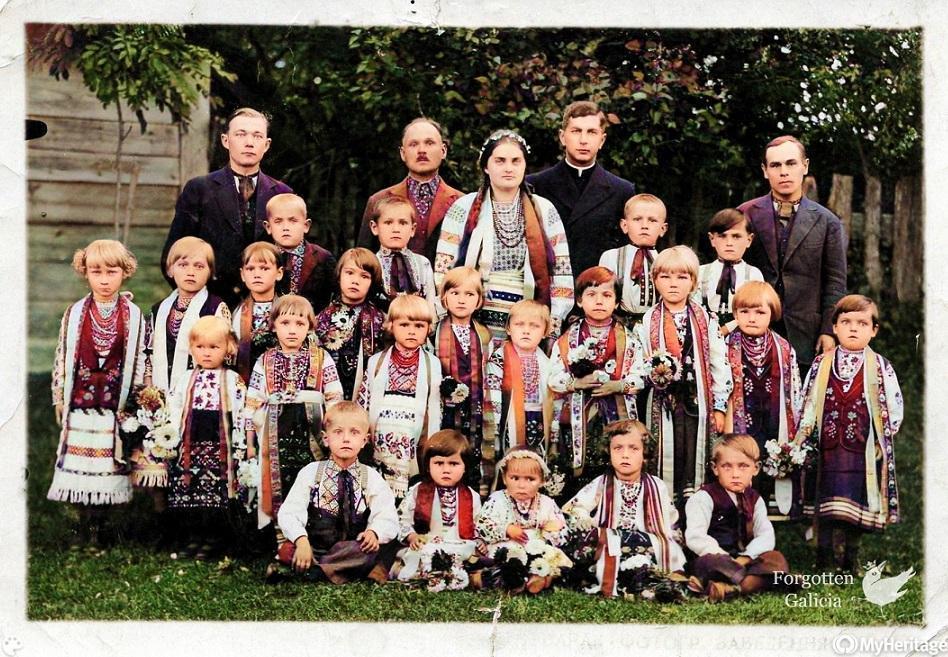
The Halychyna Town Costume, as well as traditional peasant costumes, were also worn at festyny – summer festivals held in the open air in villages. Here my great aunt describes these celebrations in her memoirs:
“During the Polish occupation, in Brody, as in all of Galicia, the Ukrainian community celebrated all the significant dates of events in the life of the Ukrainian people. On these days Ukrainians would rent auditoriums from Jews (Ukrainians could not have their own) and hold concerts, and churches celebrated mass and held memorial services. During summer, on the anniversary of Prosvita, Silskyi Hospodar, and others, villagers from the Brody region would gather along with guests from other cities of Galicia. These holidays and the so-called festyny took place under the open sky, in a sports stadium in Lypky.
“Lypky was always crowded during national holiday festivals. Tribunes were erected for speakers and grounds were cleared for various performances, among them amateur artistic village groups. Women and girls performed in national costumes that were specific to different regions of Ukraine, embroidered and decorated by hand, thus they were varied and each of them reflected the individual style and region of its owner.”
Details and Pictures of the Halychyna Town Costume
Roman K. in his Folk Costume & Embroidery blog has a wonderful, meticulously detailed description of this costume in his post Halychyna Town Costume, Ukraine. Below are some of the key points that I gathered from his research, along with a few of my own observations gleaned from reviewing photographs from that time. A significant number I found on Lokalna Istoriya, a valuable resource for old photographs, particularly from the interwar period. The website’s “Stari foto” section curates a range of images categorized by themes, including festyny, theater troupes, and various organizations. Many of the images featured below are sourced from this website.
Women’s Costumes
The embroidery on the shirts was multiplied as compared to what would have been traditionally worn by peasants in the region. Notably, vertical or diagonal stripes inspired by the shirts of Podillia, Pokuttia, and Bukovyna were incorporated into the sleeves, enriching the visual appeal. The embroidery palette expanded, introducing a vibrant array of colors. Cross stitch emerged as the prevailing technique, giving rise to a highly polychrome geometric style of embroidery.
Patterns drew inspiration from various regions of Ukraine, showcasing the versatility of design. Hutsul nyzynka designs, reimagined in cross stitch, were often employed. Modern floral patterns and the red and black designs popular in eastern Ukraine at the time were sometimes used. And of course, new designs were created, usually with the idea that the more embroidery, the better.
Complementing the embroidered blouse, women’s outfits consisted of a vest, skirt, apron, and an abundance of beaded necklaces: The skirts were made of bought cloth, often of challis floral print, and were relatively narrow. The narrow aprons, made from a single field of cloth, featured multiple horizontal rows of intricate embroidery. Typically fashioned from white linen, these self-fringed aprons added an elegant touch to the ensemble. Two types of vests were commonly worn: the gorset, a waist-length vest fastened with laces or hooks at the front and adorned with lappets, or a long open vest reminiscent of the kersetka prevalent in eastern Ukraine.
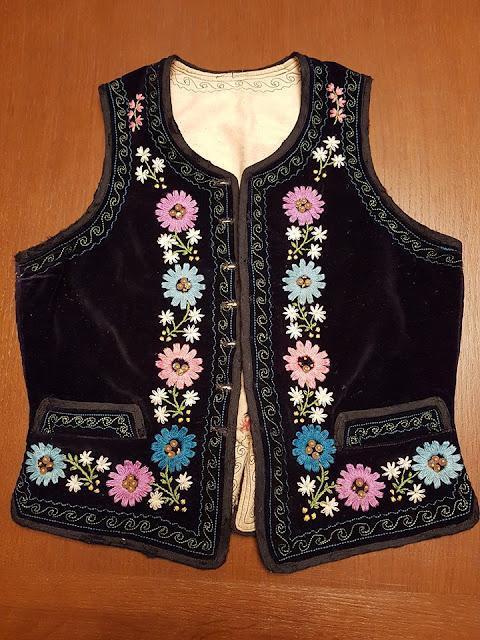

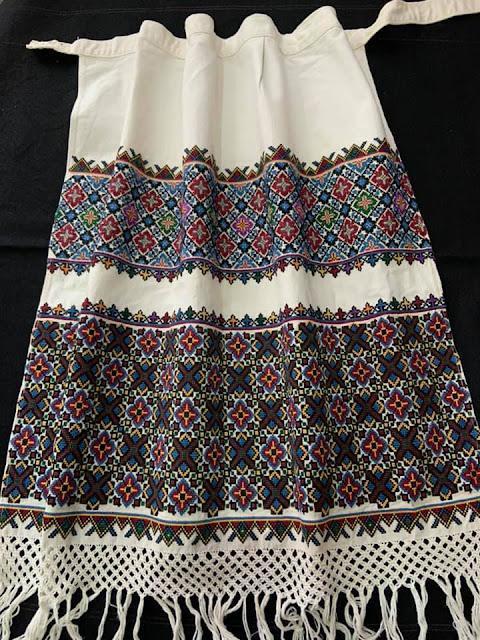
During this period, women in towns embraced a new fashion trend by leaving their hair uncovered. Some adorned their hair with wreaths embellished with long, colorful ribbons, particularly favored by young girls.

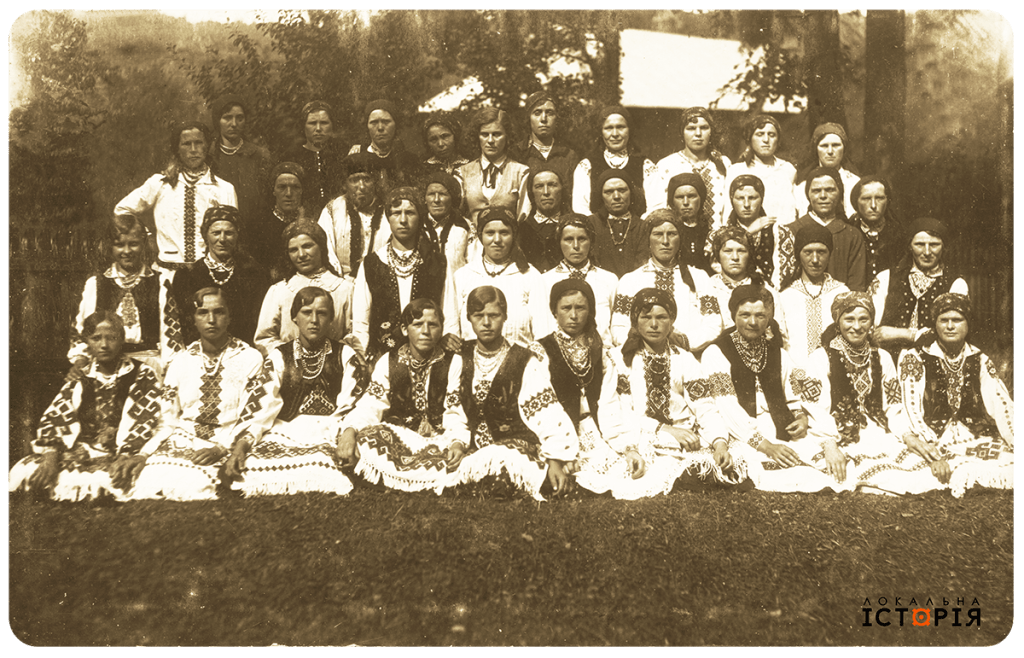
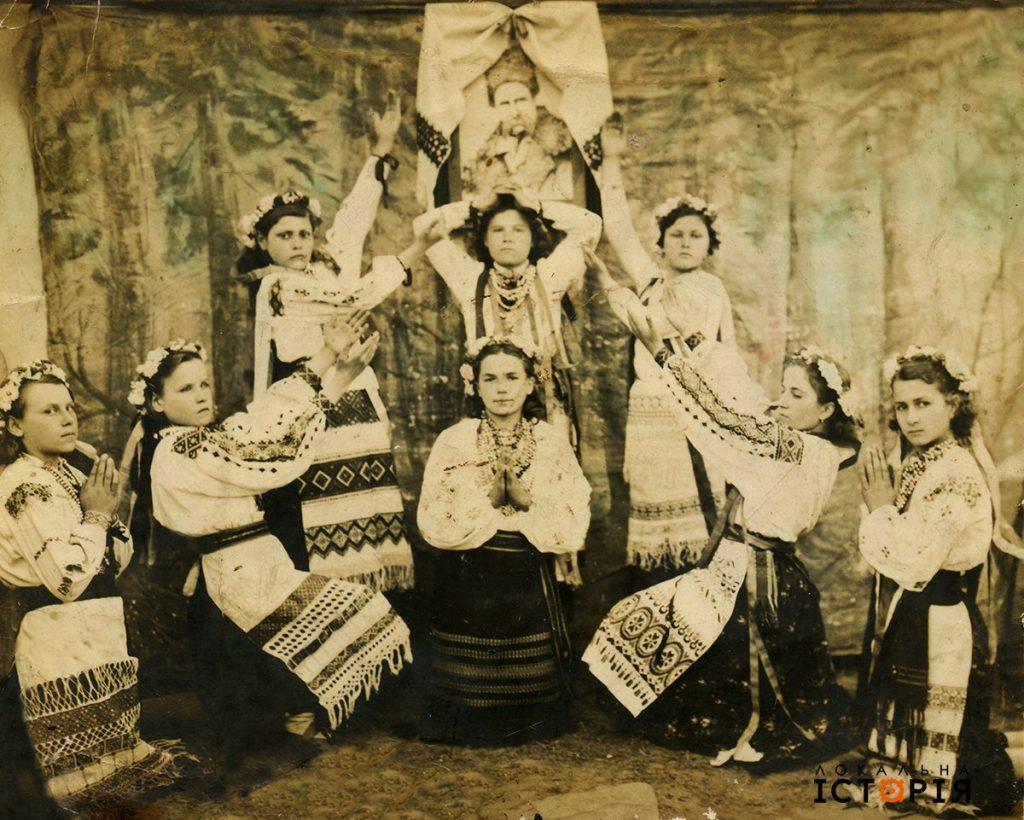
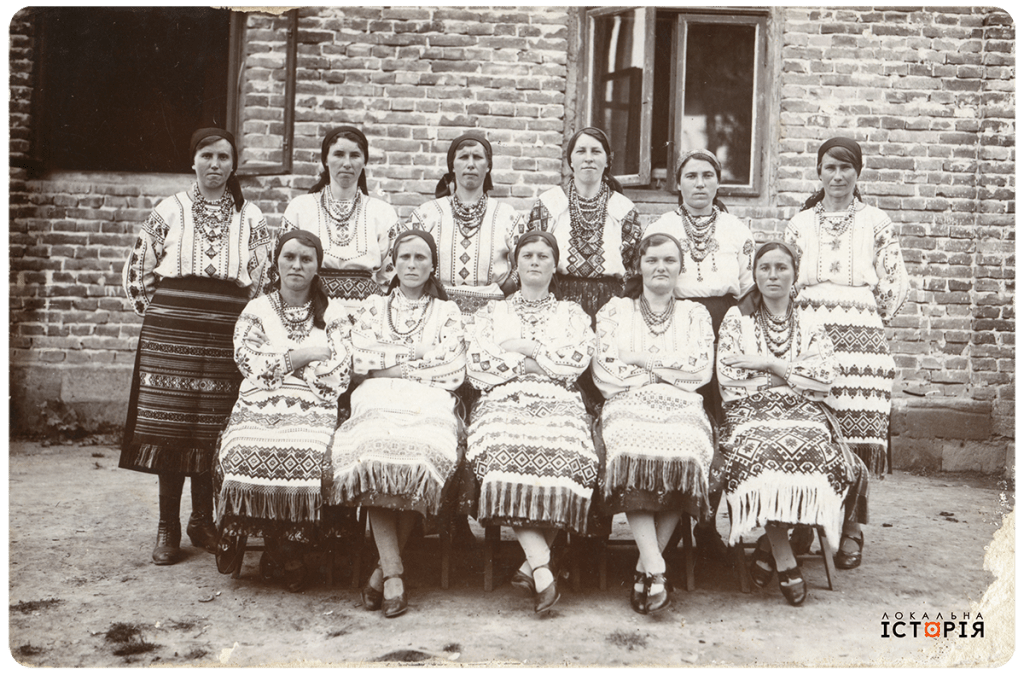
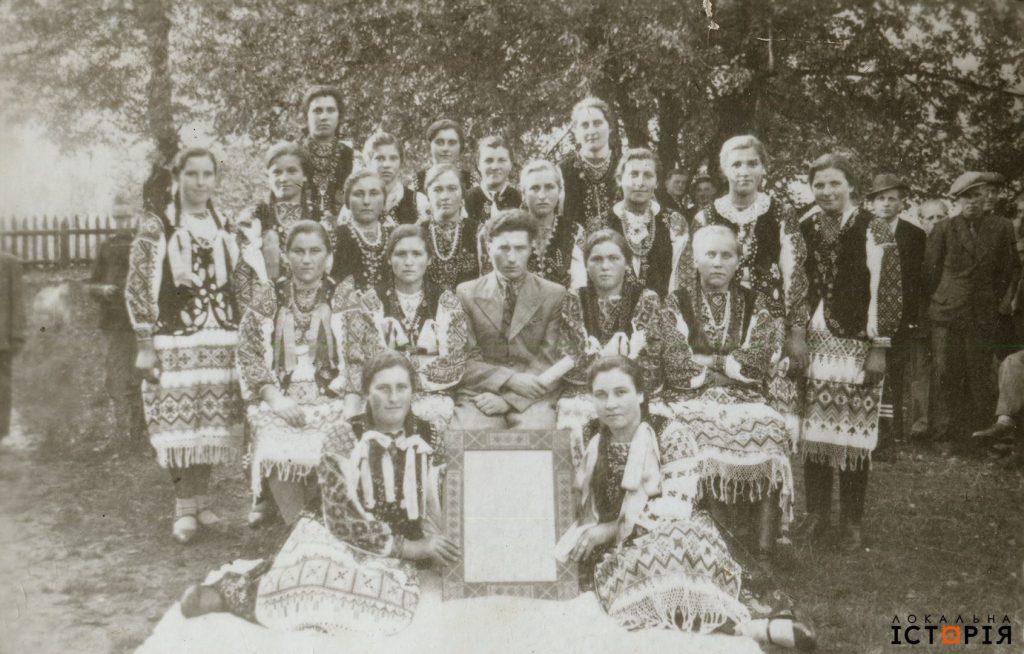
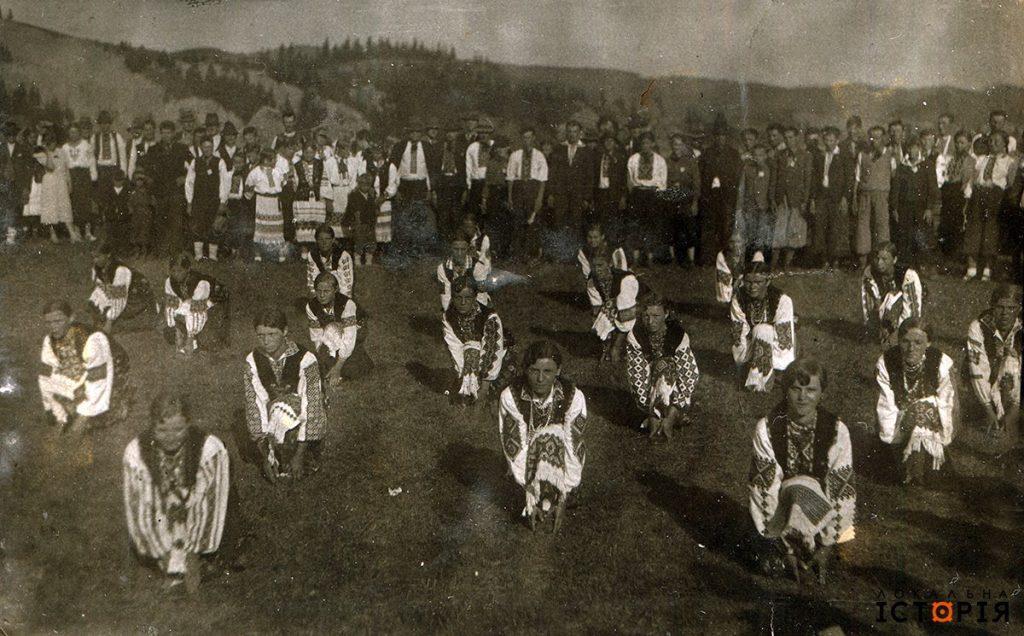
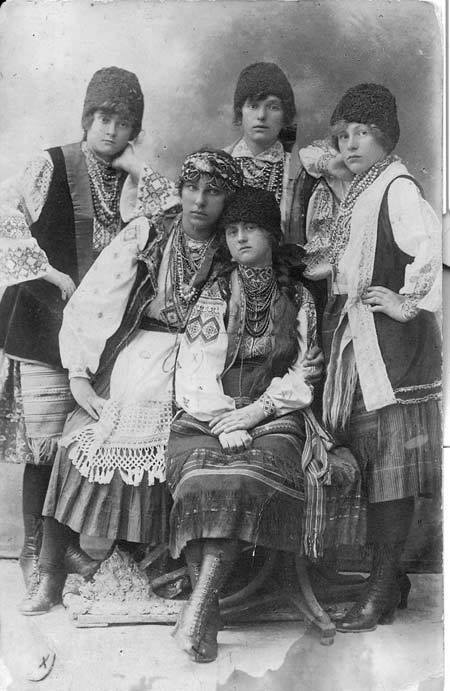
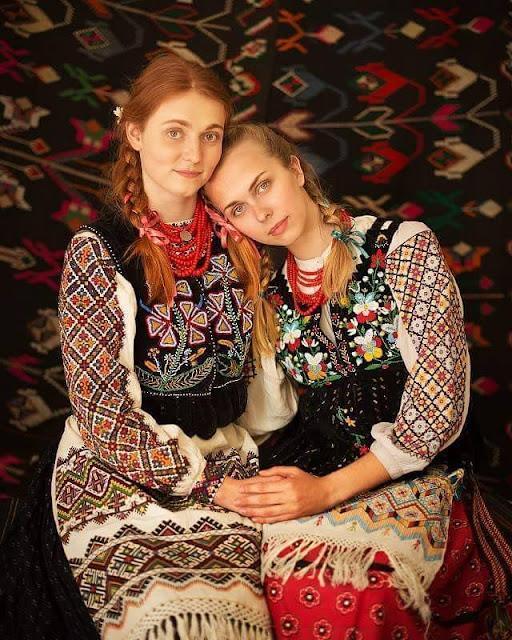
Men’s Costumes
Men’s shirts underwent a modern transformation, featuring a cut with a stand-up or turn-down collar. The focal point of embroidery shifted to the front of the shirt, often extending its width.
Embroidered blouses were commonly paired with Western-style suits, consisting of pants and a blazer. Young boys, in particular, occasionally sported sharavary pants tied with a wide krayka and tall boots to complement their embroidered attire. A ribbon tie worn around the neck served as a stylish accessory, adding a touch of refinement to the ensemble.
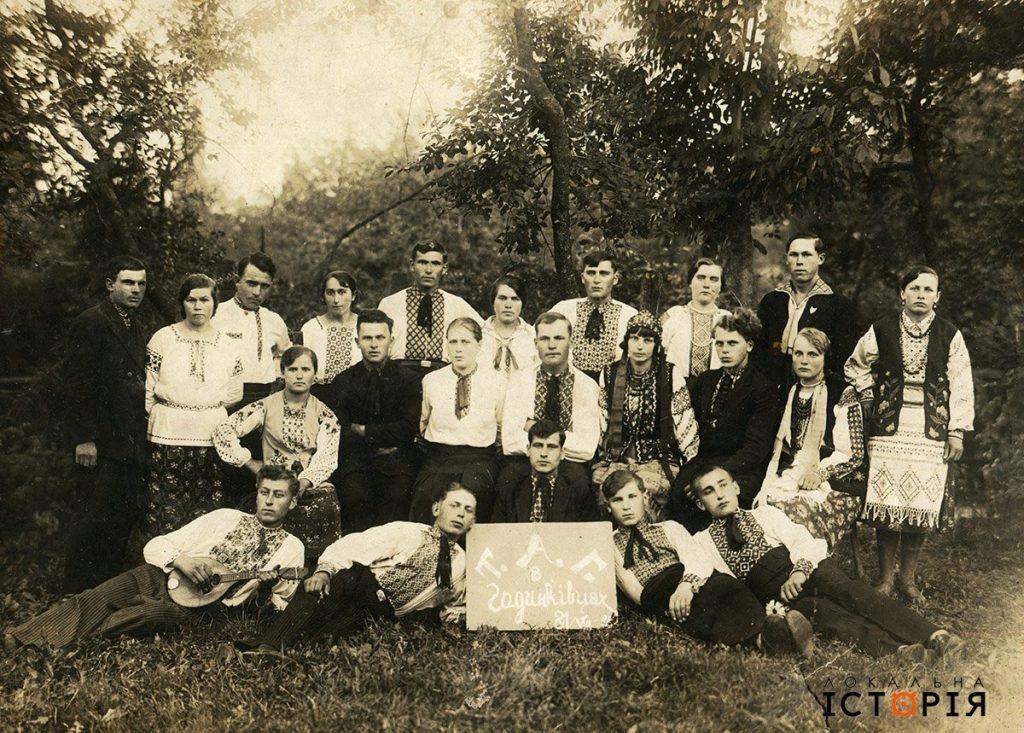
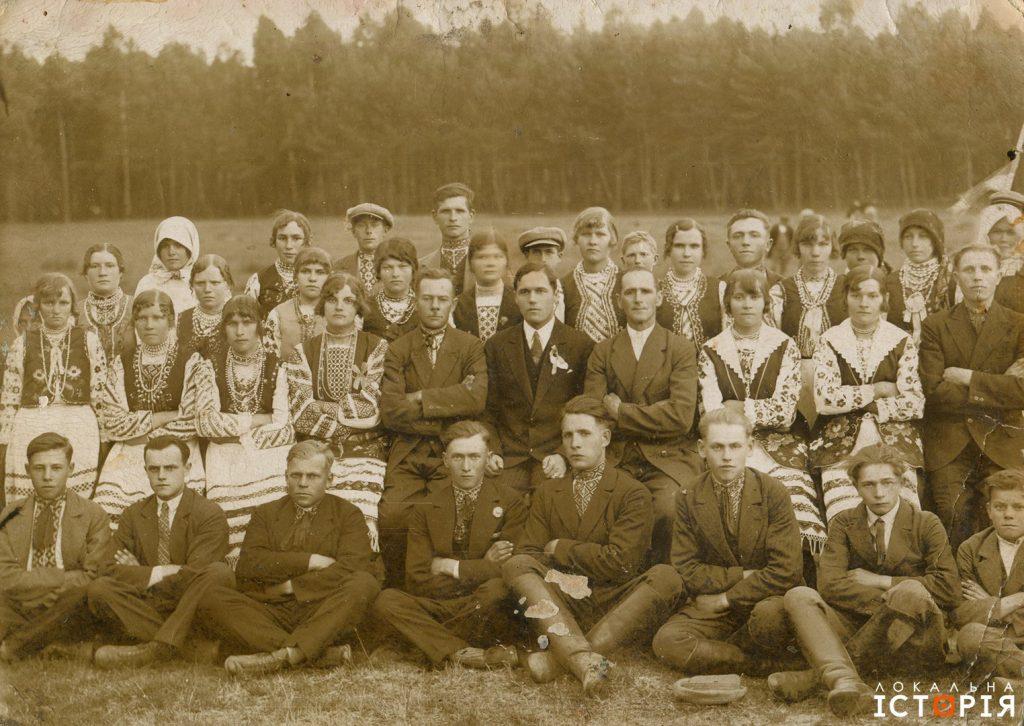



By Areta Kovalska
Sources:
Roman K, “Halychyna Town Costume, Ukraine”
Локальна Історія

